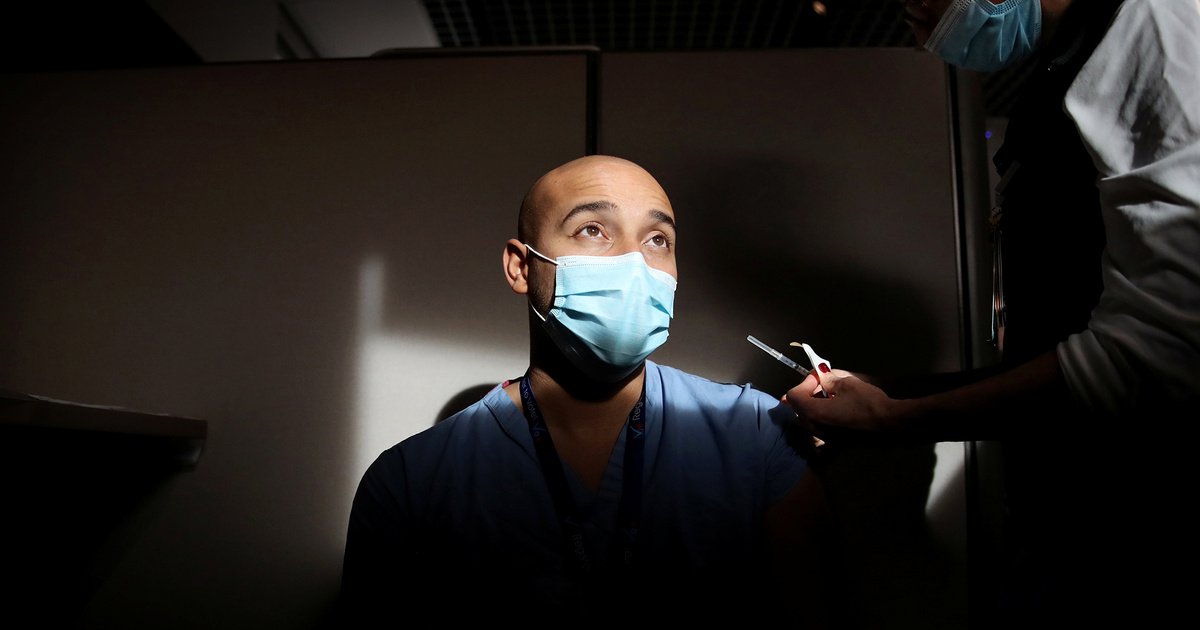
Vaccination is arguably the most effective way to limit not only the toll on human life and health but also the economic and social harm of a pandemic. This is why getting people vaccinated quickly is so important. Governments and international organizations could take several steps to accelerate global vaccination during future pandemics, promote more equitable and efficient distribution, and reduce incentives for export bans and hoarding. Two particularly important steps are advancing investments in vaccine manufacturing capacity and supply chains and financing for areas of research for which social needs greatly exceed existing commercial incentives.
Risky and time-consuming
Two characteristics of vaccine production are particularly important for understanding pandemic preparedness policy. First, development is risky and time-consuming. The chance of success for any particular vaccine candidate is usually low. Early in the pandemic, we estimated that 15 to 20 candidates would be needed to yield roughly an 80 percent chance of at least one success, based on historical data. Until 2020, vaccines took years to develop and longer still to produce on a large scale. Even with the urgency of a global pandemic, as late as October 2020 many experts thought we would wait until late 2021 for a vaccine to be approved and estimated that the world would produce just 115 million doses by the end of the year (CGD 2020). As it turned out, unusually large investments by countries including the United States and United Kingdom helped accelerate the development of multiple highly effective COVID-19 vaccines. The world was also lucky that vaccines for COVID-19 were easier to develop than those for diseases such as malaria or AIDS. Even when vaccine formulation proceeds much faster than expected, clinical trials take months. Second, finished production facilities are generally highly specialized for a particular vaccine, and each facility requires regulatory approval. It takes time to repurpose facilities, even during an emergency (about six months during COVID-19).
Before a pandemic hits, it makes sense to install a large amount of vaccine manufacturing capacity, so that the world population can be served quickly; to install capacity in parallel with clinical trials so that vaccination can begin as soon as a candidate is approved; and to install enough for multiple vaccine candidates, because we cannot know beforehand which will work, and repurposing capacity takes time.
During the COVID-19 pandemic, many firms and governments aimed to expand capacity, often by repurposing existing factories, which is faster than building from scratch. However, production was constrained both by a shortage of capacity available to repurpose and by shortages of generic inputs such as glass vials, lipid particles, and bioreactor bags. This not only slowed vaccination but also led to concerns that by expanding capacity, rich countries were monopolizing limited supplies of inputs and capacity that could be repurposed. Installing standby production capacity and stockpiling inputs in advance of a future pandemic would address this problem.
How much manufacturing capacity is needed? It makes sense to install and maintain enough to vaccinate the world with each of several vaccine candidates, since we don’t know in advance which will succeed. This would cost billions of dollars (Kazaz, Webster, and Yadav 2021), but given the IMF’s estimate of COVID-19’s economic cost, expected returns would be high even with a moderate risk of future pandemics.
Social versus private value
The private sector won’t do this alone, however. Installing and maintaining spare capacity is expensive. During a future pandemic, as with COVID-19, manufacturers will anticipate that political and social constraints on pricing will reduce their returns. The social value of additional capacity is therefore much greater than the private value to companies. We estimate that the marginal social value of existing COVID-19 vaccine capacity in early 2021 was $500 to $1,000 per course, compared with $6 to $40 per course in current contracts (Castillo and others 2021).
Governments should therefore offer incentives to install extra capacity and stockpile inputs. For example, Operation Warp Speed in the United States and the Vaccine Taskforce in the United Kingdom paid companies to install manufacturing capacity while clinical trials for COVID-19 vaccines were still underway. These programs paid for themselves many times over: COVID-19 cost the US economy an estimated $26 billion a day in 2020 and 2021 (Cutler and Summers 2020). The implication is that Operation Warp Speed, which had spent just $13 billion as of December 2020, will pay for itself if it cuts the duration of the pandemic by just 12 hours. More early investments in manufacturing capacity would have had even larger benefits (Castillo and others 2021). Governments can do this at a much greater scale and further in advance to prepare for future pandemics.
Standby capacity for future pandemics could also serve current needs, and facilities could be designed so as to be repurposed for different vaccine candidates. In a well-designed global procurement process for standby capacity, criteria for the selection of contracts would include factors such as ease of repurposing in addition to cost. However, it would be penny-wise and pound-foolish to assume in advance that this can be done on the cheap.
Vaccine nationalism
Stockpiling inputs and installing capacity in advance will also help reduce the risk of vaccine nationalism—export bans and hoarding of critical supplies that endanger the trading system most of the globe relies on for access to medical technology. During a pandemic, price controls create shortages, and shortages in turn create strong incentives for elected governments to deliver successful vaccines to the domestic constituents to whom they are ultimately accountable rather than make them available to other countries.
This is not just theory. During the COVID-19 pandemic, both the United States and India, the world’s largest vaccine producers, restricted exports of vaccines or inputs in 2020 and 2021. Some EU countries restricted exports of surgical masks even to other EU members, and the United States was accused of seizing shipments bound for its allies. When the global shortage of masks ended, international tensions quickly faded.
Moral suasion alone is unlikely to prevent vaccine nationalism. In the language of game theory, changing national governments’ behavior in pandemics will require changing the game they are playing by altering the global stock of vaccine capacity. Vaccinating the world in a few months would significantly weaken governments’ incentives for hoarding and restricting exports. Even if countries vaccinated their own populations first, delays for the rest of the world would be much shorter.
Freeing up trade by addressing shortages also has benefits for global efficiency and security. Few countries or even regions will be able to install large-scale capacity for a variety of vaccine platforms because different regions specialize in different platforms (any of which could fail), and supply chains are global. Unfettering trade will give countries the confidence to invest in standby capacity for a range of technologies, broadening the world’s portfolio of vaccine candidates.
Supply capacity
Both national and multilateral investments in supply chain and vaccine capacity and stockpiles should be welcomed. During COVID-19 there was uncertainty about whether investments by one country to expand vaccine capacity would have positive or negative effects on other countries. On one hand, these investments increase the global supply. On the other hand, if the supply of inputs cannot be adjusted quickly enough to meet new demand at existing prices, investments by one country may raise prices for other countries. However, in the long run we should be able to build as much capacity as we need, meaning we can significantly increase demand for capacity without a substantial increase in the per-unit price. So investments by one country to prepare for future pandemics will not impede access for others.
In fact, since most new disease outbreaks (such as Ebola or Zika) strike only particular regions, countries that are not affected might make their capacity available to others during emergencies. At the same time, pooled investments through multilateral organizations could allow countries to take advantage of ignorance about future pandemics. Nobody knows which countries will be worst affected during a future pandemic, so it makes sense to agree to prioritize supplies for the hardest-hit countries and populations in advance, substantially increasing security for all countries for any given level of capacity investment.
Despite vaccines being approved in December 2020, many countries do not expect to have fully vaccinated the majority of their populations until at least early 2022. In the future, we can avoid such a disastrous delay by investing strategically in advance.
Financing research
More financing for research is another urgent need. Commercial investment in certain areas of research and development of vaccines against potential pandemic pathogens is far too low to satisfy the social need, making public funding a priority. One such area is research on options for using existing vaccine supplies more efficiently, known as “dose stretching”.
The traditional research and development process is designed to optimize health benefits for the individual receiving the vaccine through the right balance between the efficacy of larger doses and their greater side effects. That balance may change during a vaccine shortage, when supply is also a public health issue. Moving to lower doses, increasing the intervals between doses, or using mix-and-match strategies could substantially accelerate vaccination, saving more lives.
Take the example of fractional dosing for COVID-19. Data from early clinical trials on the immune responses produced by lower doses of some vaccines, combined with evidence of a high correlation between certain types of immune response and vaccine efficacy, suggest that half or even quarter doses of some vaccines could be highly effective, particularly against severe disease and death (Więcek and others 2021). Using lower doses could have expanded vaccine supply by up to 1.5 billion doses a month in the second half of 2021 as well as potentially reducing side effects and thus vaccine hesitancy. Yet despite shortages, the high expected value of testing, and promising clinical trial data available since late 2020, no clinical trials of efficacy and very few further studies of immune response to fractional doses had been conducted as of late 2021 (Więcek and others 2021). The costs of further testing to optimize dosage are much lower than the expected public health and economic benefits. So in the future, studies to ascertain the optimal dosing regimen and evaluate mix-and-match vaccine doses should take place in parallel with standard clinical trials.
The optimal dosing regimen may also change as new variants emerge and the demographics of the unvaccinated population shift. For COVID-19, booster shots are one example of how vaccination regimens can change in response to an evolving pandemic situation. Overall public health benefits, not just individual-level efficacy, should be considered in these decisions.
Governments can subsidize more research with potentially significant social benefits when private incentives are insufficient. Dose optimization is just one example; there are many research questions that could have had huge social benefits but were not pursued. Since much of the evidence on such questions is a global public good, even national governments will not invest the optimal amount, suggesting a role for global institutions to invest in research with high social value. For example, the Coalition for Epidemic Preparedness Innovations recently issued a call for proposals for research on fractional dosing for booster shots of COVID-19 vaccines.
Current research and regulatory processes were not designed for pandemic situations, and it is worth considering how they could be updated to accelerate vaccine development and availability for future pandemics. Measures could include establishing scientific and ethical infrastructure to rapidly assess whether human challenge trials are appropriate; releasing preliminary data from early clinical trials to inform manufacturing capacity allocation decisions; establishing international licensing standards; and expediting the emergency use authorization process.
[“source=imf”]

















